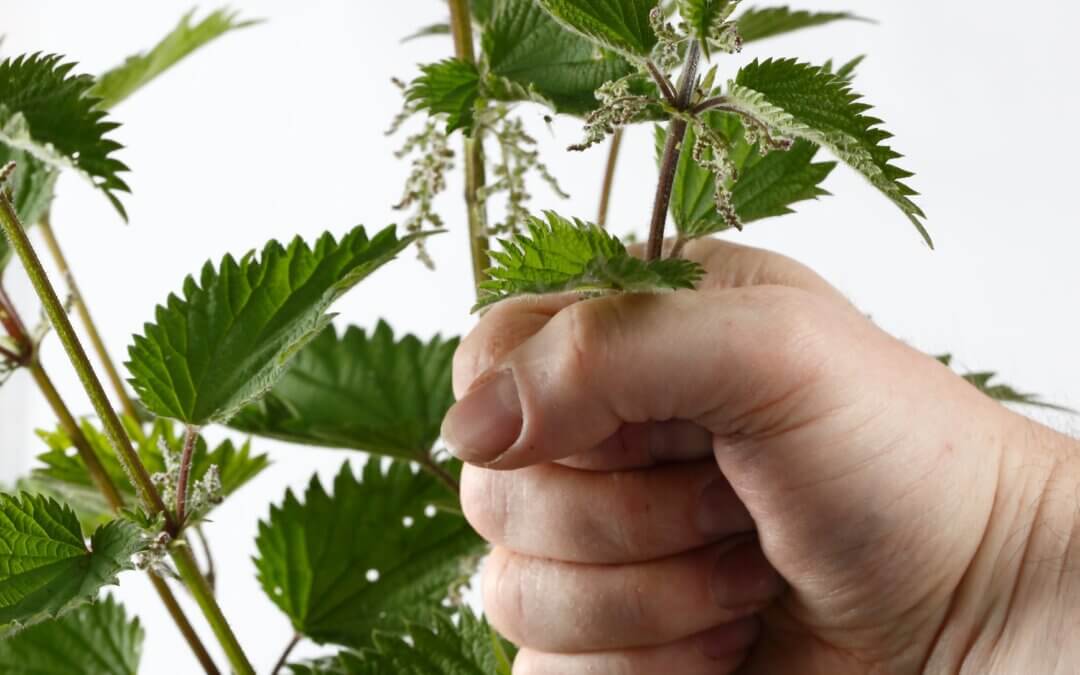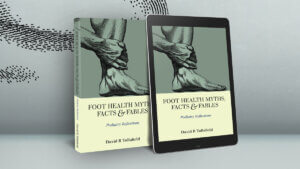GRASPING THE NETTLE
Part of my walking series
An article about contact dermatitis and plants might seem oblique on a foothealth platform. However, walking and pottering around the garden should remain a pleasure and better with sunny weather without the risk of a skin reaction whether it be associated with the foot, the leg or other part of the body.
Location and migration
Summer certainly attracts more plants and visitor activity than other seasons. Yet, even as I write this article, I feel itchy. We need to know what to avoid and if we are unfortunate to have a contact rash, we should know what to do. One point about the 10 plants I have picked is that many originate outside the UK while others remain in North America.
Given the serious concerns with Japanese Knotweed for example as a tenacious destructive plant, the spread across the glove demonstrates that boundaries do not guarantee that you will come across something that has a kick in its leaf, stem or sap. Skin and respiratory problems arise in some but not all. Fortunately it is giant hogweed and not Japanese knotweed that is poisonous in the same way, the latter has been used in cooking.
Inflammatory reactions
Some discussion about the chemicals involved in inflammatory reactions and skin changes is interesting as they inform why skin is damaged. In a broad sense, dermatitis means inflamed skin, which takes several forms in terms of the size, border, shading, depth, and quality of the skin damage. The rash could be flat, raised or blistered. Urticaria is another name used for toxic reactions. Urticaria takes a matter of moments to appear while dermatitis is delayed. Urticaria is usually associated with an allergy.
Who gets plant dermatitis?
Walkers who brush past vegetation or those who breathe in pollen are known to experience allergies—occupational people in the agricultural world, from food handlers to farmers to florists. For more medical information on plant reactions, the NZ dermatology site is excellent, but it reveals alarming reactions and perhaps is not for the squeamish.
Contact dermatitis versus eczema
Contact dermatitis and eczema are two common forms of skin inflammation but mean different things. We have to differentiate between an allergic reaction and a contact sensitivity seen with plants in many ways. Healthline is one of my sources, and Rachel Nall (2020) provides some ideas about contact dermatitis. Contact dermatitis is not the same as eczema.
Contact dermatitis and plants
In 2020, I picked up a rash that seemed to be located over my bottom and lower back. Having seen my wife suffer shingles, the irritation was terrible for both of us, although she blistered and I didn’t. However, I could not sit down for a week! Disabling rashes are no laughing matter.
Bites and ticks are another concern when we set off into densely populated areas with plants and shrubs. The three valuable sites of value selected and highlighted in blue clearly say plenty, but I thought I would provide a summary and focus on the critical issues, making this a quick read.
Nettle hairs and sap irritants
Poison ivy sounds pretty much an obvious contender, as does poison oak and poison sumac. Stinging nettle has the word sting and is the most common green leaf we understand from childhood that stimulates pain at the lightest of touch. Fall into a bed of stingers and you will never forget it. Stingers we have in the UK but ivy, oak and sumac are more likely to be found in the USA. Sorry, overseas cousins!

the hairs of nettles are made from hollow tubes packed with chemicals
Even though they provide food, nettles alone bring nasty thoughts of pain that last for several hours. However, the wood or Canada nettle has hairs amongst its white flowers, much like the common nettle.
In contradiction, a stinging nettle can help with medicine and eczema! Mind you, a handy dock leaf nearby is my first call. This is most likely the placebo effect at work, as dock leaves contain oxalic acid, not antihistamine—another myth passed on by my parents.
These tall plants can grow to 6 -8 feet and threaten any part of the body, while lower-down wood nettles are shorter, so our waists and legs will undoubtedly be exposed. As far as the foot is concerned, wearing the right shoe coverings makes sense when entering any woodland. Even paths alongside open fields and coastlines offer the odd irritant plant.
What makes us hurt?
Acid! To be accurate, formic acid, as in ant bites. Then, there is histamine, which causes cells to swell within the deep skin when released. Finally, we know the term antihistamine, which is the antidote to many swellings. Serotonin and acetylcholine will not be familiar to many people in the field of rashes. Both chemicals affect nerve signals and excite the sensory nerve system when activated.
Wild parsnip sap contains furocoumarins. Now to the layperson, coumarin might not mean much. However, if I mentioned warfarin, the association is that of an anticoagulant. Fortunately, the synthetic chemical furocoumarin does not affect the liver or kidney when tested in rats! Hopefully, that is reassuring.
Primary symptoms, as with nettles, cause a short delay and then involve tingling, stinging, swelling and numbness mixed with itching. These are potent symptoms that most adults can tolerate and slowly ebb, leaving unpleasant sensations for some hours. However, wood nettles may take longer for the symptoms to settle.
Giant Hogweed, wild parsnip, baby’s breath (gypsophila in the UK), leadwort and ragweed do not sound too deadly, but these 10 plants carry unpleasant discomfort. If the rash or pain follows from your walk, then there is every chance you will remember the likely cause. Medical skin complaints are becoming more complex because of the mental state of health, drug interactions from mixed medications and of course, dare I say the word – Covid. The after-effects of Covid have left medicine spinning in a centrifuge of confusion over symptoms that overlap with other problems.
Confusion and misleading appearance
Plants are not always active in their natural flowering state to sting or hurt the casual walker. Baby’s breath which sounds like a witch’s brew, is brought to full potential after it has dried but not when in flower. Clusters of white flowers in domes are seldom a problem. Reactions include eyes, nose and sinuses.
asthmatics beware
Ragweed is another plant that can cause respiratory symptoms. It has a lovely yellow spearheaded top with green hairy, leathery leaves. The main convector is its pollen on dispersal. This plant originated in America and found its way to Europe.
Poison sumac grows really high 6-30 feet and appear as a small tree with green-yellow leaves and grey berries. The uroshiol oil is derived from the word lacquer (urushi) – this makes a change from Latin and Greek! This compound can cause allergy in some 80% of people who come into contact with the allergen. In the wild, this is a defence against animals browsing the plant. Here is a fact – pistachio and cashew nuts, as well as mango, contain urushiol oil. If you live in the UK, this may not be a major concern, but the Southeastern states of Florida and its wetlands do contain these tree-like plants. As with poison ivy and poison oak (which resembles English oak leaves), irritations, rashes, and blistering can arise.
Leadwort (plumbago) has beautiful blue-coloured flowers with 5 petals. However, handling the plant can lead to red patches and blisters.
Sunlight can be toxic
Phototoxicity is interesting because the sun, or rather the ultraviolet spectrum, activates the chemicals in the sap. This leads to burning and blisters with the potential for scarring. Giant Hogweed is a serious contender as a phototoxic plant. One of the taller plants grows to 14 feet and has hollow stems, but the diameter of those stems can be 2-4 inches (5-10cm). Given the toxicity, severe problems can arise if the sap gets into the eye, including blindness.
The Royal Horticultural Society (RHS) provides a guide on toxic plants and emphasises those that are poisonous if ingested. Perhaps the very long list might be helpful for parents of young children.
Advice
- Identify the plant, if possible, and the time
- Wash the area and keep it cool
- Protect the rash from sunlight to prevent any worsening
- Remove any fine hairs exposed on the skin, or if necessary, use sticky tape
- acid-based stings may benefit from baking soda mixed with cold water and dressed over the area to help neutralise the reaction
- Cold packs over the skin
- Oral antihistamines and hydrocortisone cream (HC) will reverse some of the effects.
- Avoid HV on open wounds, but antiseptic can be helpful
- Dress open wounds to prevent infection.
- The above will depend on the event’s location and which part of the body has been affected. Use 111 in the UK for non-emergency advice
Emergency
If breathing is laboured, call emergency services US 911 UK 999; maintain an open airway and monitor. Be prepared to start CPR. Use an EpiPen if the person affected carries one or has an alert bracelet.
Plant reactions vary worldwide. Some of this material may only apply to northern hemisphere countries. Therefore, the list given is not exhaustive or intended as a full account of all the variant plants within its genus.
This article was taken from several sources given by links. Pictures of each of the toxic plants can be found at thedermreview.
Other walking articles can be found at ConsultingFootPain
- The Dangers of Walking in the Countryside
- Walking and its many benefits
- Are walking poles another fad?
- The Ankle and its Role in Walking
Also available by the author of this article – Foot Health Myths, Facts & Fables
Available as an ebook or in paperback from Amazon books
Thanks for reading ‘Contact Dermatitis and Plants’ by David R Tollafield
Published by Busypencilcase Communications. Est. 2015 for ConsultingFootPain



Trackbacks/Pingbacks